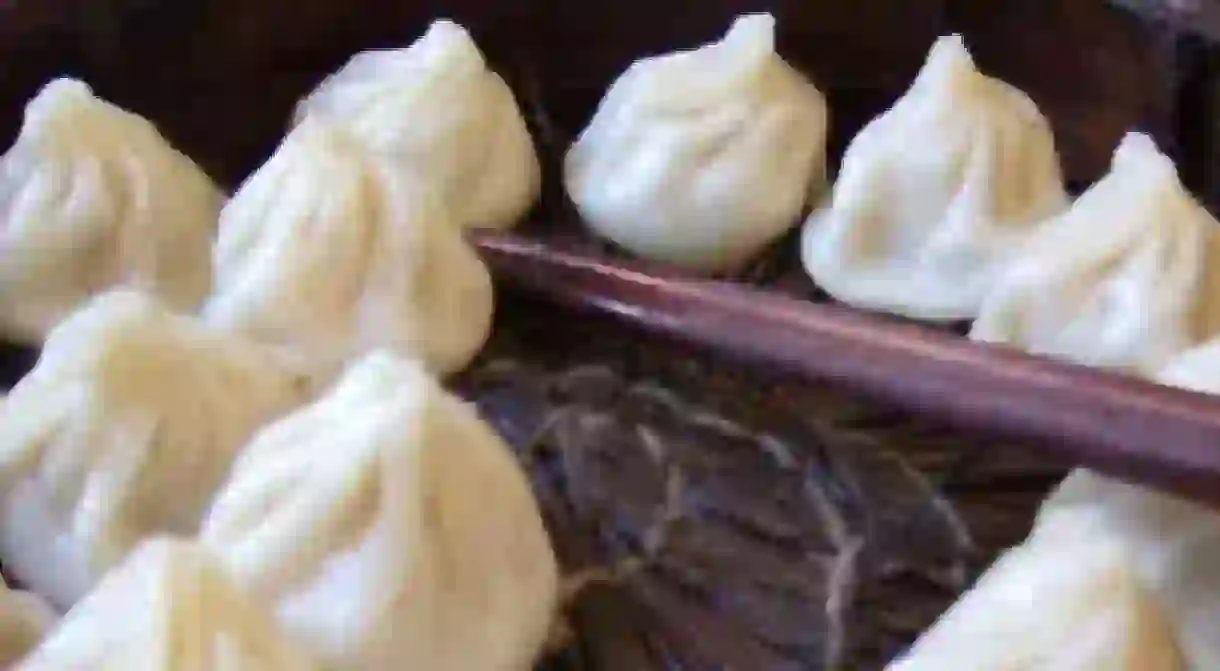The Most Mouthwatering Dumplings From China That You Have To Try

Dumplings are a culinary masterpiece that have roots in almost every regional cuisine worldwide. In many places, such as China, so many dumpling traditions have evolved over the years that the blanket term “dumplings” has almost no meaning at all. Instead, each style of dumpling is referred to by its designated name. Dumplings in China are most commonly steamed, boiled, or fried, can be either sweet or savory, and are often paired with certain festivals.
锅贴 (guōtiē)
锅贴 (guōtiē) are more commonly known in English as “potstickers” and have in recent years seen a spike of popularity in the Western world (where they are also sometimes referred to as “Peking Ravioli”). They are effectively shuǐjiǎo (scroll down for a description of shuǐjiǎo) that have been fried on one side, giving them a crisp bottom and a soft top, and are often served in China as a comfort food. They are most commonly filled with pork.
生煎 (shēngjiān)
生煎 (shēngjiān) are a Shanghainese specialty. Similar to guōtiē, they are pan-fried on one side and retain a soft top. They are presented as round balls slightly smaller than a clenched fist and have a scalding broth inside of them that always catches first-timers unaware. In Shanghai, they are often eaten for breakfast. Traditionally they are filled with pork and sprinkled with chives and sesame seeds, but most places will also sell shrimp-based shēngjiān.
小笼包 (xiǎolóngbāo)
小笼包 (xiǎolóngbāo) are another dumpling often associated with Shanghai. They are steamed in small bamboo baskets and have a soft, gelatinous skin. Similar to shēngjiān, they are also filled with a steaming hot broth, which has left many an unsuspecting diner with a burned tongue. However, they are smaller than shēngjiān and are normally filled with pork and crab roe.
虾饺 (xiājiǎo)
虾饺 (xiājiǎo) are better known by their Cantonese name, “har gow”, and are a famous dim sum dumpling. They are often a testament to the skill of the dim sum chef. The skin should be thin enough to see the shrimp inside, but thick enough to hold the dumpling together. It should never be too sticky, nor too chewy, and the shrimp inside must be perfectly crisp.
馍馍 (mómo)
馍馍 (mómo) is a dumpling native to Tibet and Nepal. While most dumplings are traditionally served with vinegar or soy sauce, mómo is served with a fiery-hot chili sauce. The dumplings are normally steamed or fried and are generally much heartier than other Chinese dumplings. Often they are served with a side of soup which anyone in the know will tell you should be poured over the mómo. Yak meat is a common filling, as are potatoes, beef, chicken, and ginger.
汤圆 (tāngyuán)
汤圆 (tāngyuán) are dumplings that are most commonly associated with the Lantern Festival (or the Winter Solstice “Dōngzhì” Festival in other parts of Asia). They are made from glutinous rice, and are thus very gooey. They are normally sweet and popular fillings include black sesame, red bean, jujube, and peanuts. Like wontons, they are often served in a soup (although the broth is normally sweet as opposed to savory).
馄饨 (húntun)
馄饨 (húntun) are more commonly known by their Cantonese name, “wontons”. In China, every region has its own version of the wonton. It is a dumpling most commonly boiled and served in soups, but in the USA you can often find it served deep fried as an appetizer. Depending on the region, wontons are normally made from a combination of minced pork, shrimp, bok choy, and thin noodles. In Sichuan – a province noted for its spicy food – they add a heaping spoon of chili paste as well.
水饺 (shuǐjiǎo)
水饺 (shuǐjiǎo) literally translates to “water dumpling”, and are a one-fold dumpling similar to guōtiē (except that they are boiled instead of fried). They are a staple food and often affiliated with Beijing and the northern regions of China. It is a tradition in the North to gather families together and make shuǐjiǎo during the Lunar New Year. The fillings are endless and in many restaurants you can find them stuffed with fish, meat, vegetables, or a combination thereof.













